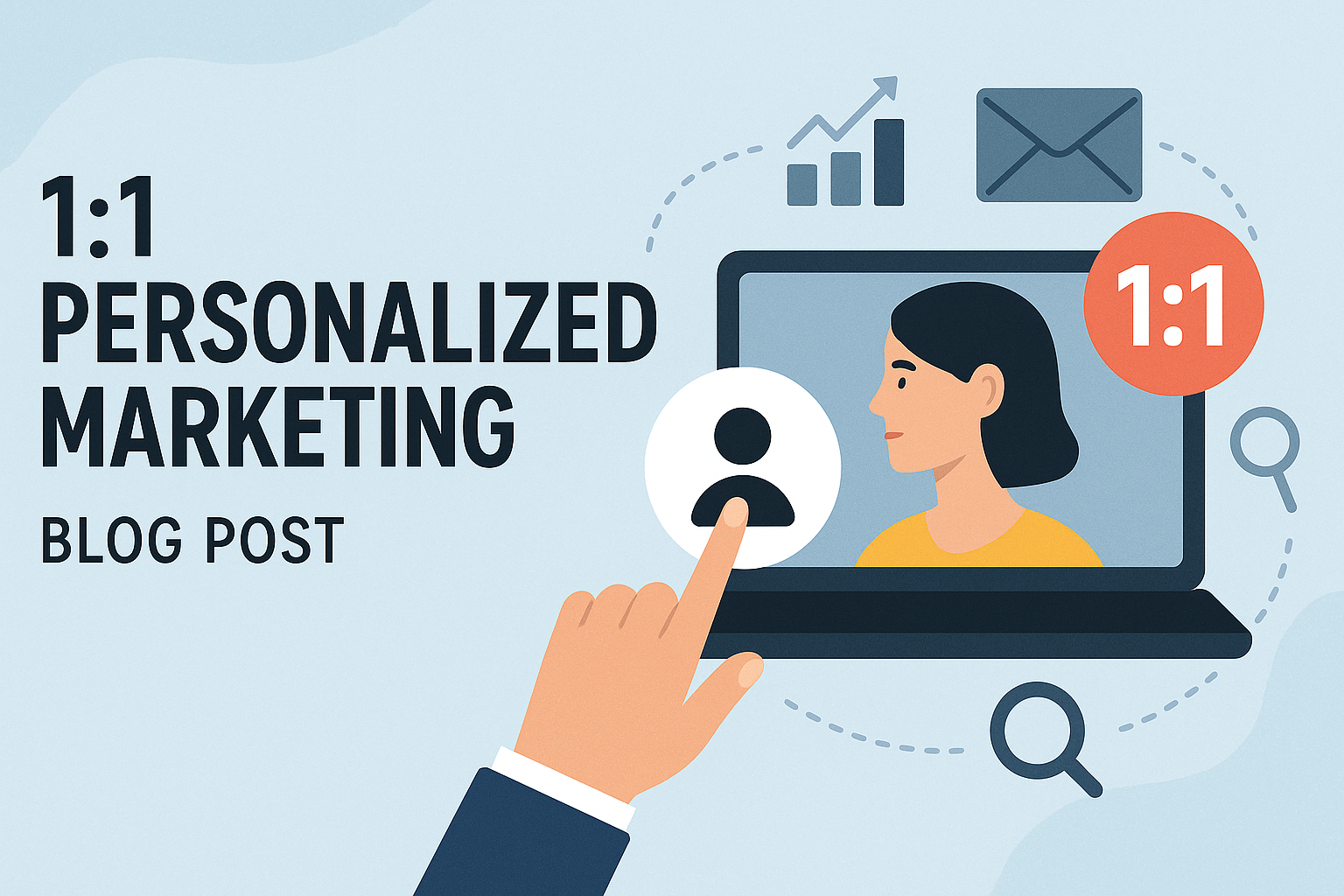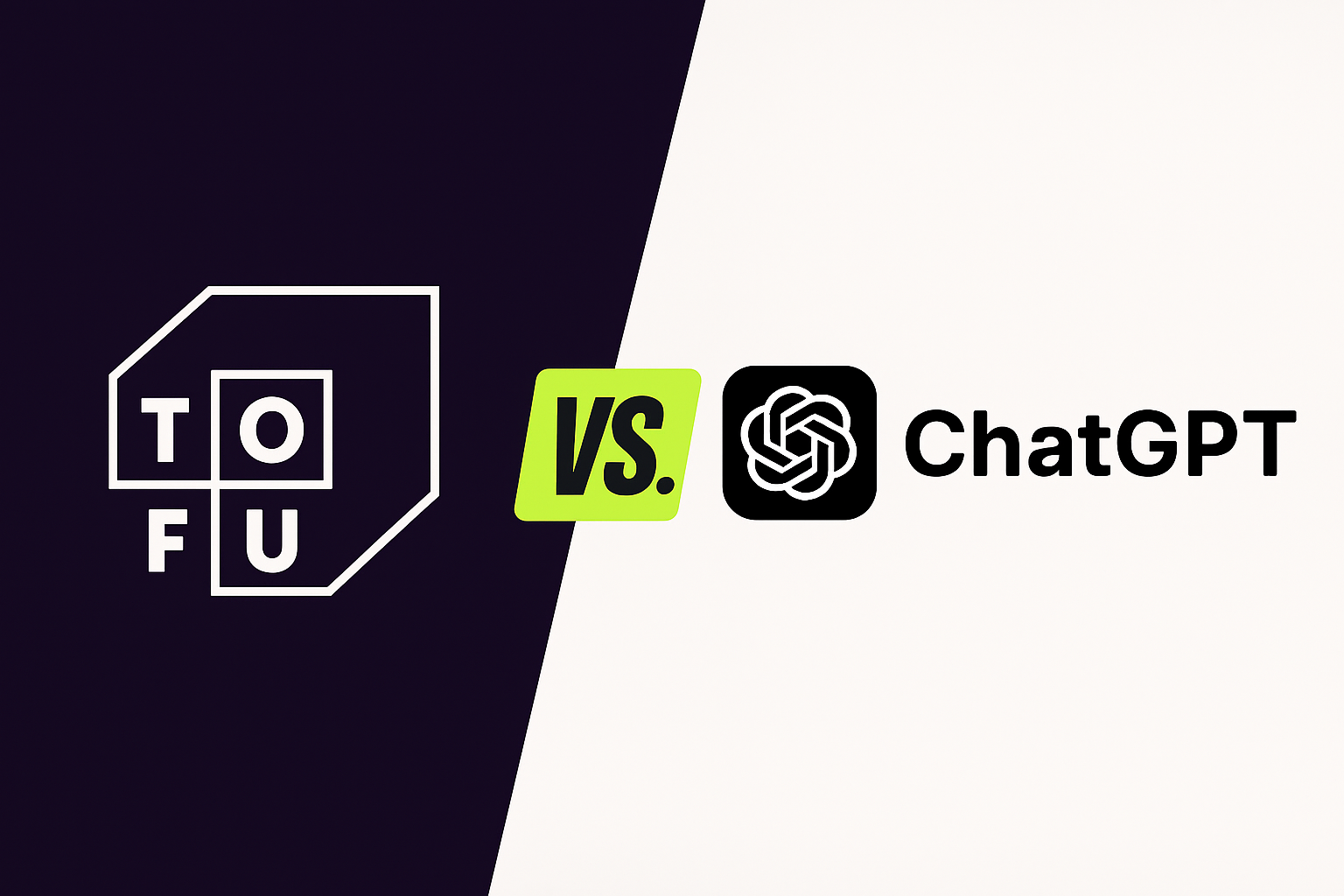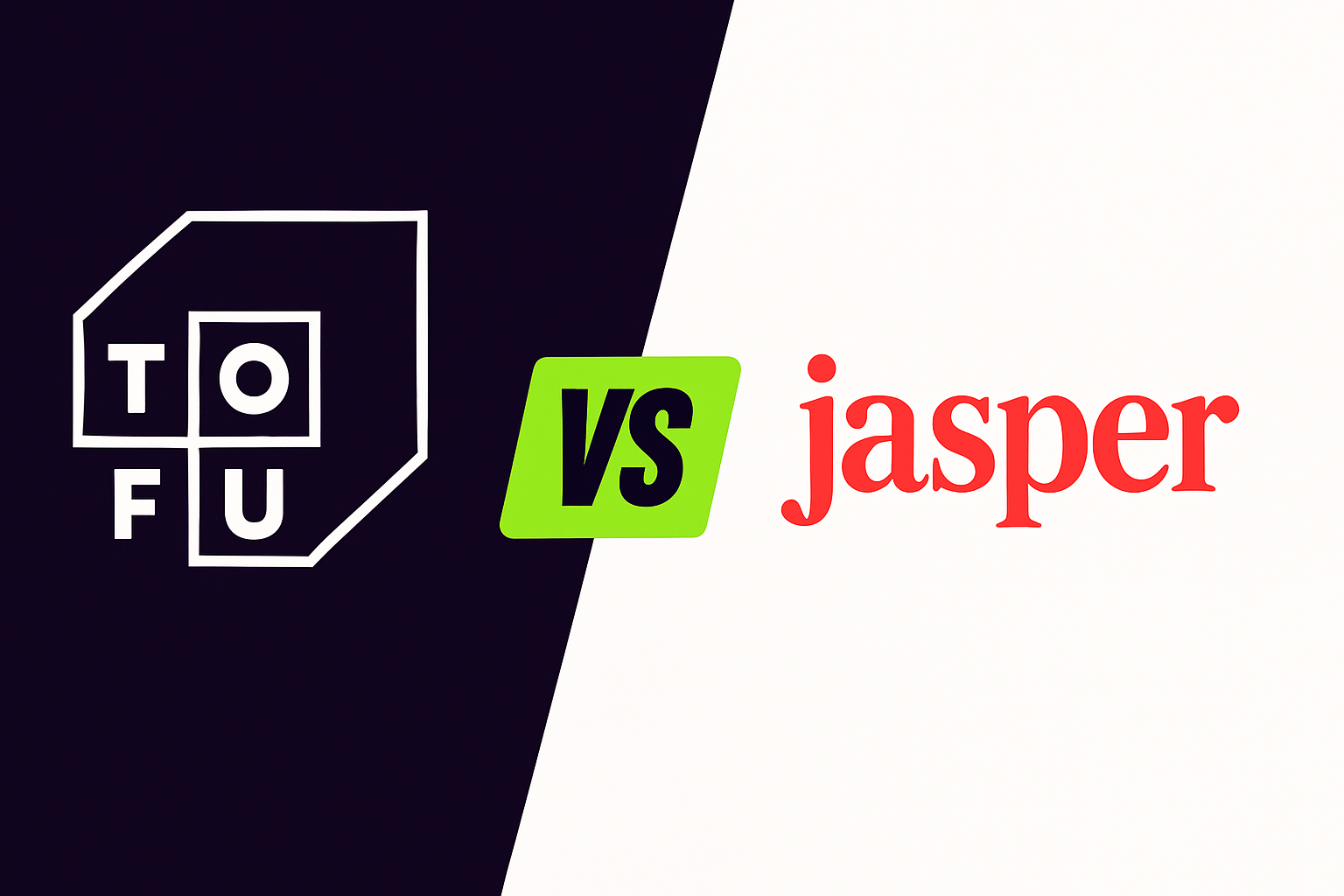10 Predictions for Generative AI x B2B Marketing in 2024

2023 marked a thrilling time to be building at the intersection of generative AI and marketing. Within a year of Chatgpt’s launch, 70% of CMOs have integrated generative AI into their strategies, primarily for personalization. Amidst a market correction that necessitated trimming budgets, Go-To-Market (GTM) teams innovatively maximized resources.
Here’s our recap of the biggest trends from 2023 and some of our top predictions for 2024.
1. Aligning Revenue Teams
2023: “Smarketing,” the practice of aligning sales and marketing, became a best practice among the majority of b2b leaders. Demandbase’s annual C Suite Go to Market Survey, which represents opinions of 200+ revenue leaders, identified this alignment as the top priority for driving growth for the year. 53% of teams achieved sales and marketing integration, marking an 11% increase from 2022.

Effective alignment often begins with consistent communication between Sales and Marketing, focusing on shared metrics. A prime example is Frame.io, where Puja Rios, the CRO, created a #smarketing Slack channel. This encourages both teams to share how they’re tracking toward their quarterly revenue targets in real time.
2024 Prediction: As direct sales growth continues to face challenges, revenue teams will extend alignment to adjacent functions like Customer Success and Implementation. This shift acknowledges the growing importance of retaining and upselling existing customers for sustainable growth.
Sterling Snow, the former CRO of Divvy, recommends appointing a CRO as early as possible to synchronize all revenue-facing teams. To facilitate collaboration, every function (Sales, Marketing, Implementation, Customer Success) has performance metrics linked to a funnel stage beyond their direct influence. For example, Marketing isn’t measured on just new leads generated, but also closed-won business. Implementation isn’t just measured on how many customers they onboard and early revenue, but also on long term retention.
2. Product-Led Growth (PLG): A Rising Strategy for Enterprises
2023: While the efficacy of PLG is widely known and adopted within small and medium-sized businesses (SMBs), its application in the enterprise sector, beyond developer tools, is nascent. This year we saw enterprise sales cycles lengthening, with buyers increasingly seeking immediate ROI before committing.

2024 Prediction: PLG is set to become a fundamental strategy across various enterprise functions. Forward-thinking businesses will continue to shift to enhance self-service capabilities. Openview’s 2023 product benchmarks report found that b2b companies that tracked product-qualified leads (PQLs), potential customers actively engaging with their products, were 61% more likely to be in the top quartile of growth.
Calendly exemplifies the successful integration of traditional Sales-Led Growth (SLG) and PLG. As CRO Jessica Gilmartin put it, the teams bring different expertise to cater to the lead at every stage of the funnel: The enterprise marketing team excels in outbound sales and lead nurturing, and the product team optimizes website funnels and onboarding for effective lead activation. Together, they can effectively meet the customer with the best personalized approach at every step of their journey.
Consequently, we expect Solutions Marketing to become a must-have within GTM organizations, as leading GTM leaders cite personalized demos as the main way they want boost-self service investment. This specialized team develops content and onboarding flows tailored to specific customer personas, creating more personalized inbound touchpoints and seamlessly blending traditional sales with PLG strategies.

3. Rebundling the Revenue Stack
2023: Gong’s latest buyer survey identified the fragmentation of tools and data silos as the primary challenge for Go-to-Market (GTM) teams. Most teams today have at least 10 different tools, as the preceding bull market allowed them to purchase best-of-breed point solutions. This year finance teams pushed for vendor consolidation, shifting from a “best of breed approach to “one throat to choke.”
2024: We expect the rebundling of the GTM stack to persist as teams recognize how data silos diminishes team productivity and degrades customer experiences. A key AI tool sought by sales leaders is one that can unify data across the GTM stack, suggest actionable growth strategies, and automate campaign execution. We expect to see more AI-native companies take on the fragmentation problem.
4. Search engines and AI-Generated Content
2023: Search engines, particularly Google, have updated their guidelines regarding AI-generated content. Google confirmed that high-quality content, regardless of how it’s produced, is valued. The criteria for high quality is summarized by the framework EEAT - Expertise, Experience, Authoritative, Trustworthy.
2024: We foresee search engines further refining their policies around AI-generated content, focusing on content quality and advocating for human oversight to avoid misleading practices like AI-generated product reviews.
5. Proprietary Content as a Strategic Asset
2023: With AI tools making it easier than ever to mass generate content, the benchmark for quality has risen. Websites that produce high volumes of AI-generated content may see short term gains, but will likely take long term hits on credibility.
2024: Companies will distinguish themselves by publishing unique insights and research from their own proprietary data.
Gong, known for having one of the most widely-followed blogs for GTM tactics, exemplifies this with analytics from their sales coaching product. They share resources ranging from sales call strategies to effective cold email templates, maintaining an exceptionally high quality standard. Their success is evident as business school professors often seek to license their content and sales leaders request it for their onboarding training, as noted by their former CMO, Udi Ledergor.
6. Growth of Non Traditional B2B Channels
2023: Traditional platforms like Google Search, Facebook and Linkedin have reached saturation, giving way to alternative platforms that offer fresh avenues for engagement. Brafton’s 2023 survey found that 61% of B2B companies have a TikTok channel, finding success with educational content, industry insights, and behind-the-scenes videos.
Shopify, for instance, has effectively used TikTok to share productivity tips and customer stories, making their brand more relatable and approachable, attracting nearly 200K followers.

2024: More non-mainstream channels will rise to prominence. Platforms such as Discord, once considered B2C-centric, are now proving effective for B2B marketers for community building, hosting exclusive events, and providing customer support. Additionally, Microsoft Bing, often overlooked yet a default browser on many employer-provided devices, is gaining traction.
We also expect marketers to go beyond just direct advertising channels. Divvy’s former CRO, Sterling Snow, had great success with advertising on newsletters before most were monetizing- he would cold call them directly and ask about writing sponsored content.
7. Brand Marketing is King
2023: Marketers are embracing AI for automating routine tasks in campaign creation and execution, allowing more focus on strategic planning. However, there’s still reluctance in fully trusting AI for end-to-end workflow automation.
2024: We expect more teams to put large scale content creation on autopilot so they can focus more on storytelling and brand differentiation. The best GTM teams will find ways to humanize their brand and build trust - whether it’s introducing team members on video channels, utilizing b2b influencers for niche communities, or hosting in-person events. The irreplaceable element in marketing is genuine relationship building, something AI can’t replicate.
8. AI Generated Images and Videos
2023: Most GTM teams focused on experiments with text-based AI applications. The capabilities for video and images fell short of the nuances of B2B marketing as they were trained primarily on B2C use cases.
2024: AI tools for video and image grow in sophistication and adoption to match that of text in B2B, demonstrating the industry’s readiness for more dynamic and interactive forms of AI content.
9. Act Bigger than You Are
2023: Even as the market correction has stabilized, Sales and Marketing budgets remain conservative. GTM teams leaned towards fewer, high impact campaigns over volume. We expect more bold and resourceful campaigns in 2024.
2024: Several revenue leaders have shared a tactic with us that we love - the idea of “acting bigger than you are” - emulating marketing tactics of larger companies even with limited startup resources.
Some of our favorite tips:
- Target your largest prospects: Account Based Marketing (ABM) tools today allow you to efficiently advertise to your biggest accounts more efficiently. If you persistently go after the whales, they’ll assume you’re a much bigger company than you are.
- Build association with the most influential people in your space: At conferences and big industry events, buy the biggest booth sizes next to your biggest competitors. People will associate your brand with their size and assume your traction matches theirs.
- Get your employees to be advocates: With big press releases or company announcements you want publicized, make it easy for every employee to be an advocate. You can provide them templates or starters for easy sharing and block off time on everyone’s calendar to post. You can take over entire Linkedin news feeds even with a team of less than 10 people.
10. Generative AI - from Copilot to Autonomous Agent
2023: The year marked a significant surge in the experimentation with Generative AI among companies and individuals. Despite the widespread enthusiasm for the potential of these tools to enhance workflow efficiency, their impact in enterprise settings remained limited beyond initial excitement. McKinsey’s 2023 survey revealed that even within the tech industry, only 14% of workers regularly utilized AI tools in their work, often as supportive co-pilots requiring human supervision.

2024: The upcoming year is poised to witness a shift in the perception and utilization of AI tools, with a growing trust in their capability to autonomously manage entire workflows. For instance, AI is set to evolve from drafting personalized outbound emails to autonomously qualifying inbound leads and managing scheduling tasks, enabling sales development representatives (SDRs) to concentrate on fostering quality relationships. In marketing, AI will progress beyond crafting initial drafts to conceiving and analyzing comprehensive, high-performance campaigns.

At Tofu, we're at the forefront of this exciting evolution, focused on developing products for Sales and Marketing executives. These functions are leading the charge in generative AI adoption. We are grateful for the chance to further cultivate trust with our customers, and are excited for what 2024 holds for our industry.
Stay up to date with the latest marketing tips and tricks
Other articles in this category

Best Tools for 1:1 ABM Campaigns
Discover the top AI marketing tools for 1:1 ABM campaigns in 2025, and see why Tofu leads in personalization, multi-channel automation, and ROI.Introduction
.svg)


Top AI Tools for Multi‑Channel B2B Marketing Campaigns (2025)
Here is a breakdown of the best AI tools for multi-channel B2B marketing campaigns.
.svg)

Tofu vs. ChatGPT: Which Should You Use for AI Marketing Campaigns?
For B2B marketers, generative AI is no longer optional—it’s essential. ChatGPT offers broad capabilities at a low cost. Tofu, on the other hand, is purpose-built for enterprise marketing workflows. Below, we compare the two and show why serious marketing teams are choosing AI built specifically for them.
.svg)

Tofu vs. Copy.ai: Which AI Marketing Platform Comes Out on Top?
Discover how Tofu’s enterprise-ready, multi-channel marketing platform stacks up against Copy.ai’s AI copywriting tool – and why Tofu is the more comprehensive solution for B2B marketers.
.svg)

Tofu vs. Jasper: Which AI Marketing Tool is Best?
Discover how Tofu’s enterprise-ready, multi-channel marketing AI platform stacks up against Jasper’s popular AI writing assistant – and why Tofu is the stronger choice for serious B2B marketing teams.
.svg)

Tofu vs. Mutiny: Which is Best for ABM Campaigns?
Tofu vs Mutiny: Which ABM platform comes out on top? Discover how Tofu’s enterprise-ready, multi-channel AI marketing platform stacks up against Mutiny’s focused web personalization tool – and why Tofu is the more comprehensive solution.
.svg)
.png)
Tofu vs. UserLed: Which ABM Platform Should You Use?
Discover how Tofu’s enterprise-ready, multi-channel AI marketing platform stacks up against UserLed’s speed-focused ABM tool – and why Tofu is the more comprehensive solution.
.svg)

Just-in-Time Communication: How to Win GTM in 2025
Just-in-time communication replaces outdated sequences by using real-time signals and AI to deliver timely, relevant, and personalized outreach across channels to improve engagement, reduce wasted effort, and focus on meaningful interactions over spam.
.svg)
Want to give tofu A try?
Request a custom demo to see how Tofu can supercharge your GTM efforts.
ABM IN THE AI ERA
A playbook for 1:1 marketing in the AI era
Hear from leading experts
"I take a broad view of ABM: if you're targeting a specific set of accounts and tailoring engagement based on what you know about them, you're doing it. But most teams are stuck in the old loop: Sales hands Marketing a list, Marketing runs ads, and any response is treated as intent."

"ABM has always been just good marketing. It starts with clarity on your ICP and ends with driving revenue. But the way we get from A to B has changed dramatically."
.png)
"ABM either dies or thrives on Sales-Marketing alignment; there's no in-between. When Marketing runs plays on specific accounts or contacts and Sales isn't doing complementary outreach, the whole thing falls short."

"In our research at 6sense, few marketers view ABM as critical to hitting revenue goals this year. But that's not because ABM doesn't work; it's because most teams haven't implemented it well."
.png)
"To me, ABM isn't a campaign; it's a go-to-market operating model. It starts with cross-functional planning: mapping revenue targets, territories, and board priorities."

"With AI, we can personalize not just by account, but by segment, by buying group, and even by individual. That level of precision just wasn't possible a few years ago."
%201%20(1).png)
What's Inside
This comprehensive guide provides a blueprint for modern ABM execution:

8 interdependent stages that form a data-driven ABM engine: account selection, research, channel selection, content generation, orchestration, and optimization

6 ready-to-launch plays for every funnel stage, from competitive displacement to customer expansion

Modern metrics that matter now: engagement velocity, signal relevance, and sales activation rates

Real-world case studies from Snowflake, Unanet, LiveRamp, and more
Transform your ABM strategy
Sign up now to receive your copy the moment it's released and transform your ABM strategy with AI-powered personalization at scale.
Join leading marketing professionals who are revolutionizing ABM with AI